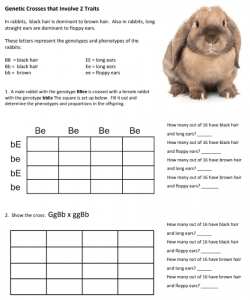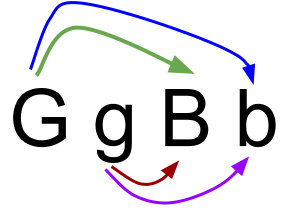
Beginning biology students can struggle with dihybrid crosses and setting up Punnett squares that have two traits. When tackling this concept, make sure students are familiar and competent with basic genetic crosses and setting up Punnett squares for a single trait. For example, a tall (Tt) plant is crossed with a short plant (tt).
Once that have mastered the basic cross, they are ready to move on to an advanced cross that involves two traits.
Most introductory biology texts suggest using the 4×4 square and the “FOIL” method of determining the gametes that are placed at the sides of the square.
For this method, the combination of male gametes is placed on the top of the square. The female gametes along the side. (You can reverse these with no difference in the outcome.)
The challenge for students is determining the gamete letters. If a parent has the genotype GgBb, then each allele will combine with the alleles from the other gene. I suggest students use the “FOIL” method. Most are familiar with this from their algebra class.
FOIL = First, Outer, Inner, Last

Example of a dihybrid cross
This worksheet begins with squares that are already set up, showing the allele combinations. Then it progresses to where students must set the squares up on their own. They complete several practice problems to help them learn how to do 4×4 Punnett squares.
Students start with rabbit traits (lop ears). The last section focuses on fruit flies and assigns a dihybrid cross – GgEe x GgEe.
Time Required: 15-25 minutes
Grade Level: 9-12

